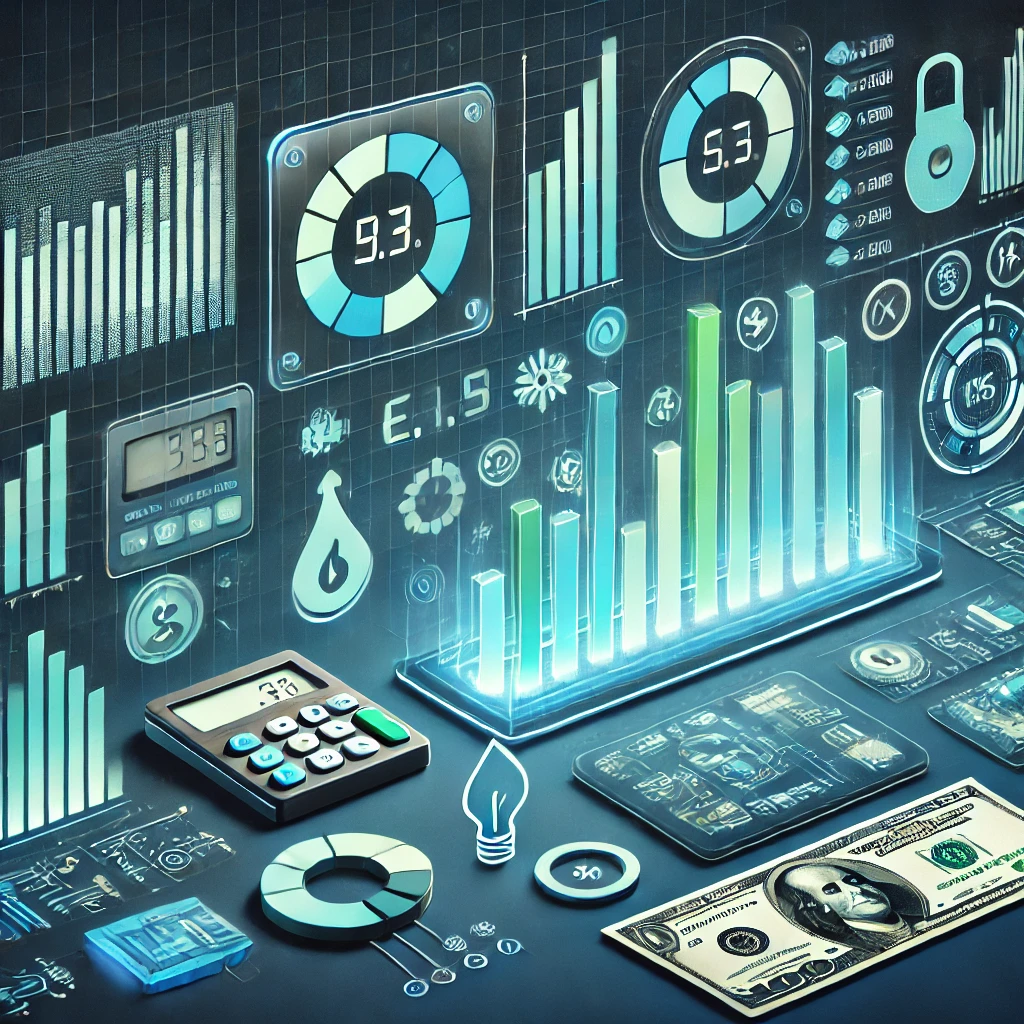
Imagine a world where your energy consumption isn’t just monitored but optimized in real-time, saving you money and reducing your carbon footprint. Sounds like a dream, right? With smart data management and energy efficiency tools, this dream is now a reality.
Whether you’re a homeowner, business owner, or sustainability advocate, understanding how to leverage data for smarter energy decisions can be a game-changer. In this guide, we’ll dive into what smart data management is, why it’s essential, and how you can use it to make informed energy choices. Let’s get started!
What is Smart Data Management?
Smart data management is the process of collecting, analyzing, and utilizing data to make informed decisions.
In the context of energy usage, it involves gathering data from multiple sources—smart meters, IoT devices, and energy management systems—and applying advanced analytics to uncover patterns, inefficiencies, and opportunities for improvement.
Key Benefits of Smart Data Management in Energy:
- Real-Time Monitoring: Know exactly how and where energy is being consumed.
- Actionable Insights: Tools flag inefficiencies, such as overuse by specific devices, and recommend solutions.
- Continuous Optimization: Dynamic adjustments ensure energy is used effectively at all times.
For example, if your HVAC system is consuming more energy than usual, smart data tools can identify the issue and suggest maintenance or usage adjustments.
Why is Smart Data Management Important for Energy Efficiency?
Energy efficiency is more than just reducing consumption—it’s about using energy wisely. Here’s why smart data management matters:
- Cost Savings: Identify wasteful habits and reduce utility bills.
- Sustainability: Lower energy consumption directly translates to reduced greenhouse gas emissions.
- Predictive Maintenance: Prevent equipment failures by identifying issues before they occur.
- Regulatory Compliance: Stay ahead of energy efficiency regulations and avoid penalties with automated monitoring and reporting.
How to Optimize Energy Usage with Smart Data Management
Here are five actionable steps to implement smart data management and improve energy efficiency:
1. Invest in Smart Meters and IoT Devices
Smart meters and IoT-enabled devices provide the backbone for data collection. They deliver real-time insights into your energy consumption, enabling precise monitoring and optimization.
Examples:
- A smart thermostat can automatically adjust your home’s temperature based on occupancy.
- IoT-connected appliances help you identify inefficient devices and take corrective action.
2. Use Energy Management Software
Energy management software (EMS) analyzes data from multiple sources and presents actionable insights in user-friendly dashboards.
Key Features of EMS:
- Consumption Tracking: Monitor energy usage across devices and locations.
- Goal Setting: Establish energy-saving targets and track progress.
- Comprehensive Reporting: Generate detailed reports for stakeholders or compliance purposes.
Popular Tools: Systems like Siemens’ Desigo CC or Schneider Electric’s EcoStruxure offer robust EMS solutions tailored to various needs.
3. Leverage AI and Machine Learning
AI and machine learning bring predictive capabilities to energy management. These technologies can anticipate energy demand, adjust consumption during peak hours, and even automate energy-saving actions.
Example Applications:
- AI can analyze weather data to optimize heating and cooling systems.
- Machine learning algorithms can predict when specific equipment is likely to fail, enabling proactive maintenance.
4. Conduct Regular Energy Audits
Energy audits combined with smart data tools provide a clear picture of your energy inefficiencies.
Steps for a Smart Energy Audit:
- Analyze energy usage data from smart meters and IoT devices.
- Identify inefficiencies, such as poorly insulated areas or energy-intensive equipment.
- Prioritize upgrades, like installing LED lighting or adding solar panels.
5. Educate and Engage Stakeholders
Energy optimization is most effective when everyone involved understands its importance. Use data visualizations and reports to showcase the benefits of energy-saving measures and encourage active participation.
Tip: Consider creating easy-to-read dashboards for team members or family members to track progress and encourage involvement.
Common Challenges and How to Overcome Them
While smart data management offers numerous benefits, it comes with its own set of challenges:
Challenge 1: Data Overload
With so much data available, it can be overwhelming.
Solution: Focus on key metrics like peak energy usage, equipment efficiency, and total energy consumption. Use dashboards to simplify data visualization.
Challenge 2: High Initial Costs
Smart devices and management tools often have high upfront costs.
Solution: Leverage government incentives, utility rebates, or financing programs to offset costs. Over time, the savings will outweigh the investment.
Challenge 3: Privacy Concerns
Collecting data can raise concerns about privacy and security.
Solution: Use secure platforms to store and analyze data. Ensure compliance with data protection regulations like GDPR or CCPA.
Challenge 4: Resistance to Change
People often resist new technologies or workflows.
Solution: Offer training, highlight the long-term benefits, and provide real-world examples of successful implementations.
The Future of Smart Data Management and Energy Efficiency
The future of energy efficiency is closely tied to the evolution of smart data management technologies.
- Blockchain for Energy: Peer-to-peer energy trading, enabled by blockchain, will allow consumers to sell excess energy directly to others.
- Advanced AI: Emerging AI tools will integrate renewable energy sources into the grid seamlessly, balancing supply and demand in real time.
- Enhanced IoT: Next-gen IoT devices will provide even greater granularity in energy data, making optimization more precise.
Conclusion
Smart data management is no longer just a tool—it’s a necessity for anyone looking to optimize energy usage, save costs, and contribute to a sustainable future.
Start by assessing your energy usage, investing in smart tools, and leveraging data insights to make informed decisions. Remember, every small step adds up to create a big impact.
What’s your experience with smart data management? Share your thoughts or success stories in the comments below. Together, we can build a smarter, more sustainable future!
